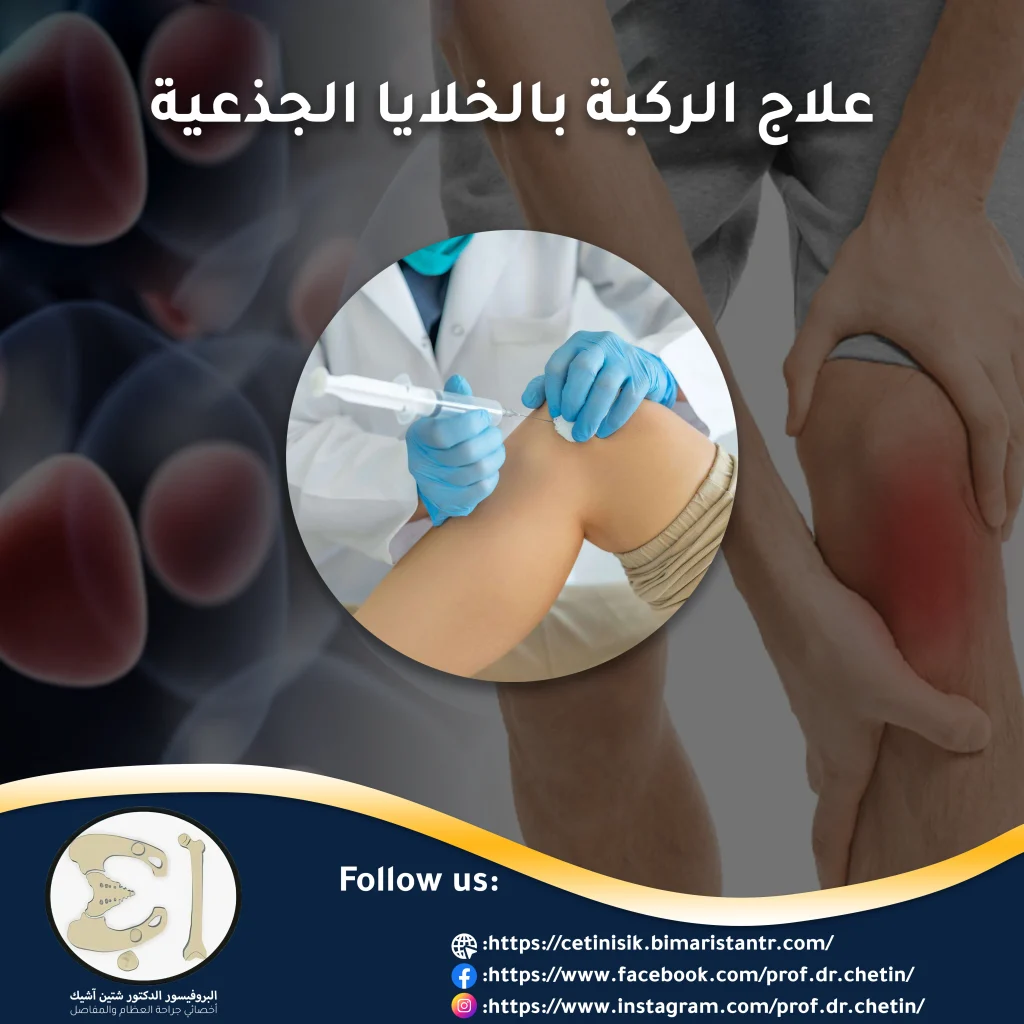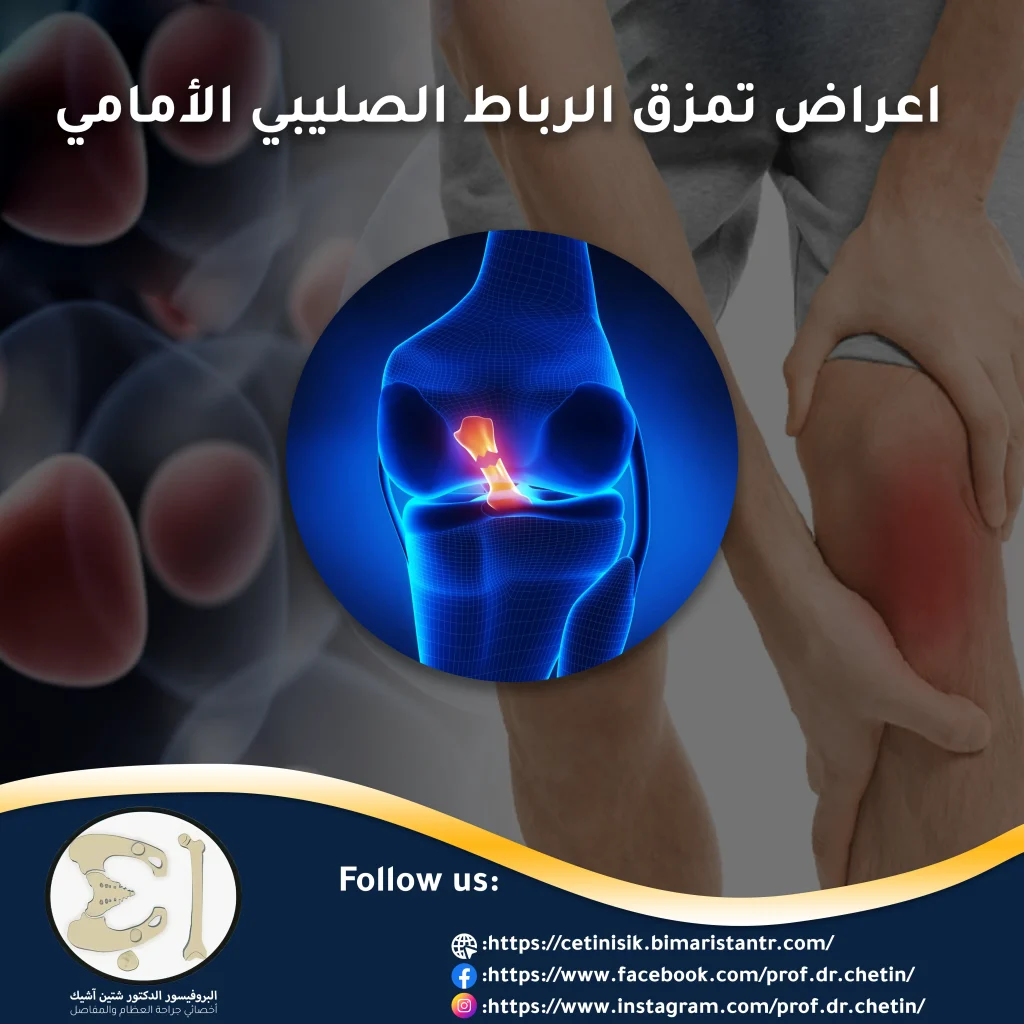Patellofemoral pain syndrome is one of the most common causes of knee pain and it is important to start early treatment before the pain worsens over time and affects the quality of life.
Patellofemoral pain syndrome relates to the way the knee moves, particularly the patella over the groove of the thigh bone. This painful condition is common among athletes who participate in activities that require knee flexions, such as fast running, jumping, and cycling, but it also affects people who do not exercise. Follow us in This article to learn about the causes of patellofemoral pain syndrome, the most important symptoms associated with it, and the different treatment methods.
What is patellofemoral pain syndrome?
Patellofemoral pain syndrome, also known as Runner's knee Runner's knee Moderate to severe pain around the kneecap or at the front of the knee.
Patellofemoral pain syndrome occurs when the nerves in the soft tissues and bones around the kneecap are irritated or irritated. These tissues include the tendons, the fatty pad under the kneecap and the synovial tissue that lines the knee joint.
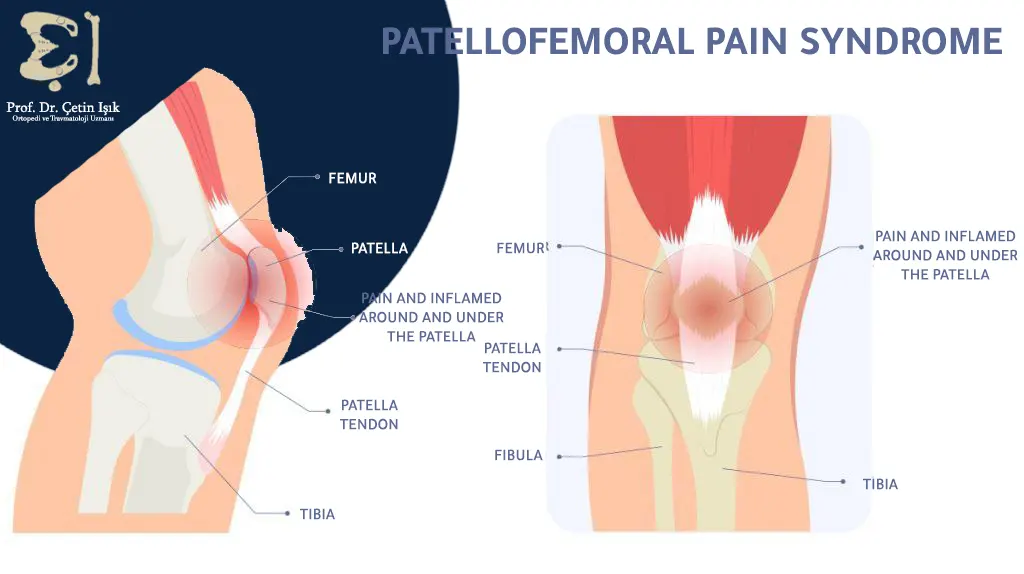
It happens in some cases Patellofemoral pain Softening of the patellar cartilage (saponaria), which is the collapse of the articular cartilage on the side of the lower patella that is devoid of any nerve. Therefore, the damage to the cartilage itself does not cause pain directly, but rather is a result of inflammation of the synovial membrane after injury.
Knee joint anatomy
It is necessary to know a simplified anatomy of the knee joint to understand the patellofemoral pain syndrome, which is one of the largest and most complex joints in the body, as it consists of the lower end of the femur and the upper end of the tibia and patella.
The four main ligaments and tendons of the knee hold the bones together and connect them to the muscles. The quadriceps femoris tendon connects the muscles in the front of the thigh to the patella, and the patellar tendon extends from the kneecap to the tibia.
Many structures in the knee joint make movement easier. The patella rests in a groove in the lower front part of the femur. When the knee is flexed or extended, it moves back and forth within this groove. The synovial membrane contributes to the movement and the meniscus in the sliding of the bones without friction.
Risk factors for patellofemoral pain syndrome
The combination of factors that increase the risk of people developing patellar pain syndrome or runners' knee include:
- Age: Teenagers and young adults are most likely to get it, although it can also affect the elderly.
- Gender: Women make up the majority of patients with patellofemoral pain syndrome due to the increased risk of muscular imbalance and the wider angle of the female pelvis.
- High-impact activities: Engaging in high-impact or weight-bearing activities causes repetitive stress on the joints, especially the knee joint.
- Flat feet: People with flat feet put extra pressure on the knee, which increases the chances of developing the syndrome.
- Nature of work: It was observed that manual occupations exposed their owners to patellofemoral pain syndrome.
Causes of patellofemoral pain syndrome
The exact cause of patellofemoral joint pain is not fully known, but the syndrome is likely to develop for a number of the following reasons:
- Patellar Alignment Problems: The kneecap is pushed to one side of the femoral groove when the knee is flexed. Because of this abnormality, the pressure on the posterior region of the kneecap increases and the soft tissues become irritated.
- Knee overuse: Activities such as running and jumping or repetitive movement such as squatting increase stress on the knee joint.
- Muscular imbalance: Weak muscles around the hip or knee fail to maintain proper alignment of the body's joints, including the kneecap.
- Trauma: Injuries or surgery to the knees may lead to patellofemoral pain.
Symptoms of patellofemoral pain syndrome
The characteristic symptom of patellofemoral pain syndrome is a dull knee pain that usually begins gradually and is associated with physical activity such as running, jumping or sitting for long periods. It may be present in one or both knees.
Other common patellofemoral pain syndrome symptoms include:
- Mild swelling
- Crackling or creaking sensation when flexing or extending the leg
- Decreased thigh muscle strength if the syndrome is left untreated
Diagnosis of patellofemoral pain syndrome
The doctor usually diagnoses the syndrome through a comprehensive physical examination after taking the patient's medical history and asking about the activities that trigger the knee pain and also about the nature and intensity of the pain (mild to severe) and its onset (sudden or gradual).
To accurately locate the pain, the doctor gently presses the front of the knees and may ask the patient to do squatting or jumping exercises to test the mobility of the knee.
In most cases, x-rays are taken to detect damage to the bones around the knee.
MRI also provides clear images of soft tissues such as tendons, ligaments, and muscles.
Treatment of patellofemoral pain syndrome
Patellofemoral pain syndrome or a runner's knee causes symptoms that range from mild to painful. Treatment options vary according to the severity of the pain, the patient's age, and the nature of his activity and work, conservative methods that help in treatment in most cases, and surgical treatment that the doctor resorts to in severe cases.
Conservative measures and self-care
Rest
Because patellofemoral pain syndrome often results from overuse and overactivity, resting the joint and raising the knee up can help relieve mild knee pain.
Ice compresses
Ice packs can be used and placed for 20 minutes during a break to reduce the pain, and it is preferable to avoid applying ice directly to the skin.
knee brace
Using a retractable elastic bandage and wrapping it around the knee with an opening in the patella area helps support and stabilize the joint and prevent swelling.
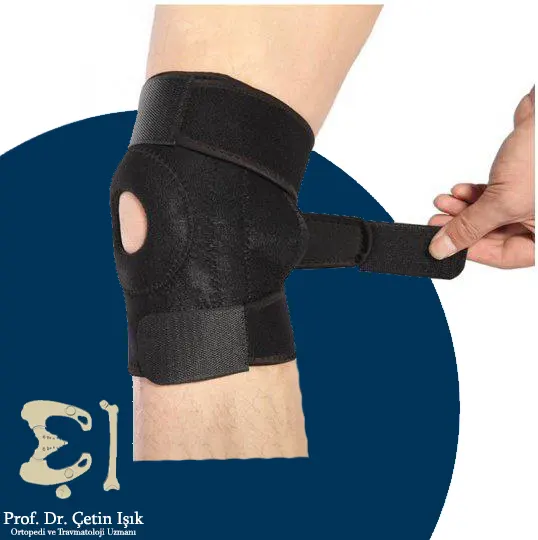
Medications
Certain medications may help reduce swelling and relieve pain. NSAIDs such as ibuprofen and naproxen may be considered. Best pain reliever for arthritis.
physical therapy
Practicing specific exercises under the supervision of a specialist can contribute effectively to treating patellofemoral pain syndrome. It is essential to focus on strengthening and tightening the thigh muscles because they are among the most important stabilizing factors for the kneecap. It is also recommended to do exercises to strengthen the abdominal and lower back muscles.
Orthotic devices
Patient-specific shoe inserts help correct the alignment and stability of the ankle and foot, reducing pressure on the lower legs and correcting alignment.
Surgical treatment of patellofemoral pain syndrome
Surgical treatment of patellar pain syndrome is resorted to in severe cases that do not respond to previous treatment measures.
The types of surgeries used in the treatment include:
Knee arthroscopy
This minimally invasive procedure involves the surgeon removing the damaged cartilage, releasing the tendons, and pulling the patella to allow it to move into the femoral groove properly with a thin tube containing a camera and light.
Transfer of the tibial tubercle
Where the patella is realigned, the doctor will move the tibial tubercle (tibialis) as well as the patellar tendon toward the inner side of the knee to improve the alignment of the kneecap (kneecap).
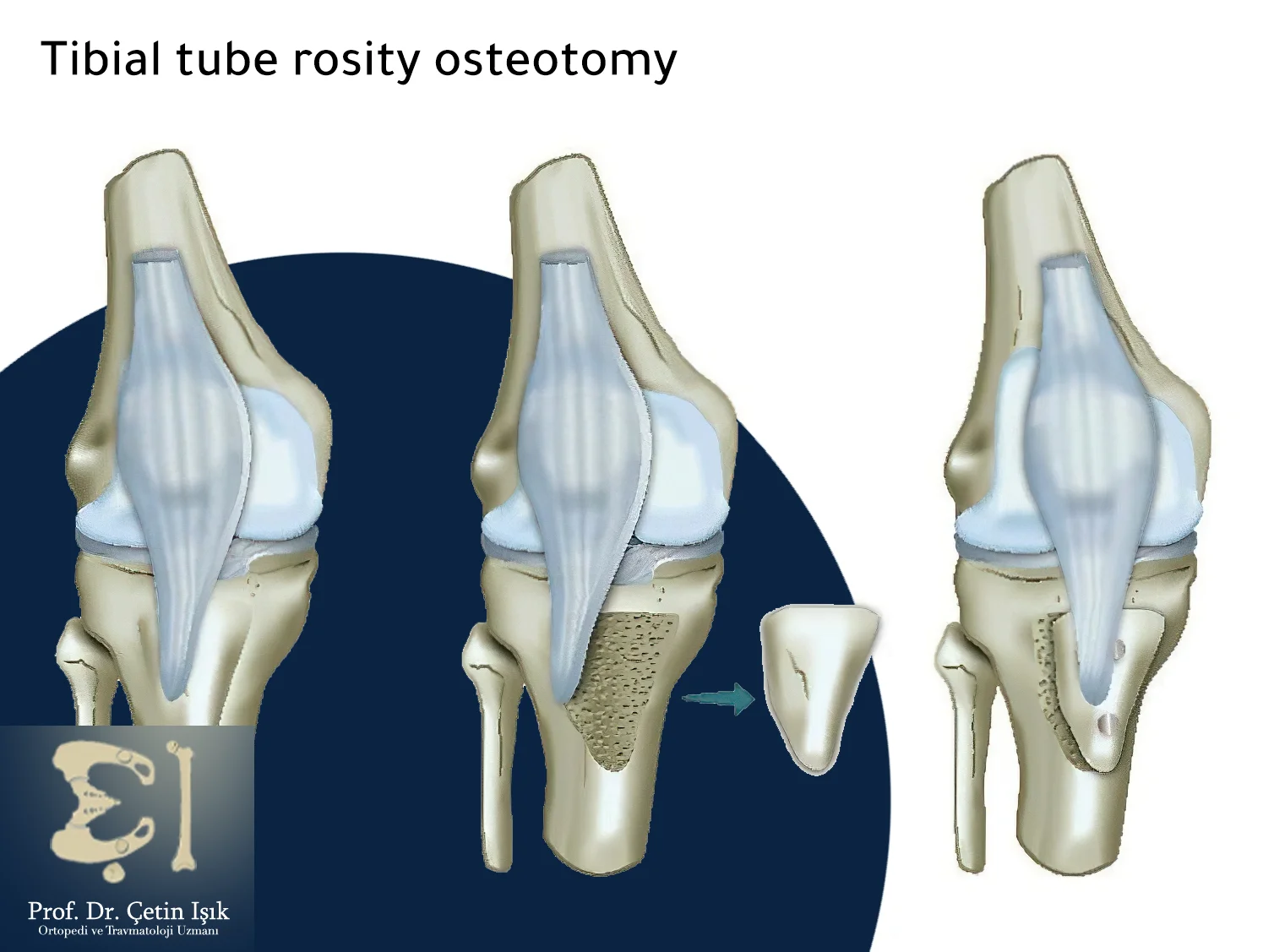
debridement
In some rare cases, removal of the damaged meniscus from the surface of the kneecap can help relieve knee pain.
Prevention of patellofemoral pain syndrome
can avoid Patellofemoral pain syndrome By modifying your activity level or exercise routine, other most common helpful measures include:
- Maintain a healthy weight
- Wear appropriate shoes for the sporting activity and use protective equipment to avoid knee injuries
- Start stretching and warming up before exercising and do not start high-intensity exercises suddenly
- Gradually increase training intensity
- Avoid activities that previously caused knee injury
It is necessary not to neglect knee pain and to quickly seek medical advice and take the appropriate measure immediately after noticing the presence of symptoms of the syndrome, whether pain or inflammation, as most people recover from patellofemoral pain syndrome, whether with home treatment of exercises and pain relievers, and in stubborn cases through surgery with the necessity of treatment after it to fully restore joint mobility.
Sources:
Common questions
Doctors do not recommend steroid injections for the treatment of patellofemoral pain syndrome, as it can weaken the tendon and expose it to injury, and thus damage the knee.
Recovery from patellofemoral pain syndrome (pfps) may usually take a long time, as the time ranges between 5-7 weeks at least, taking into account the resumption of sports activities and exercises gradually and with caution.
If patellofemoral pain continues without treatment, knee pain will worsen over time, causing damage to the knee joint.
Patellofemoral pain syndrome or runner's knee is an overuse injury that causes pain or inflammation in the front of the knee.



